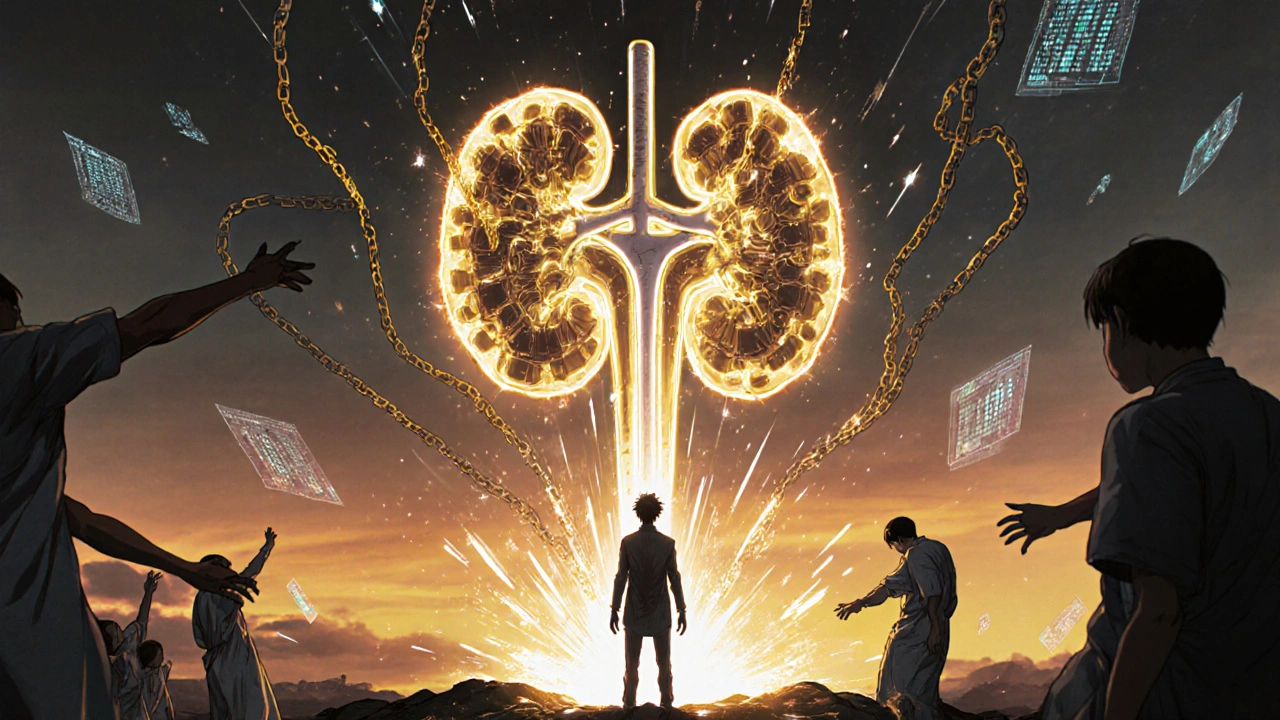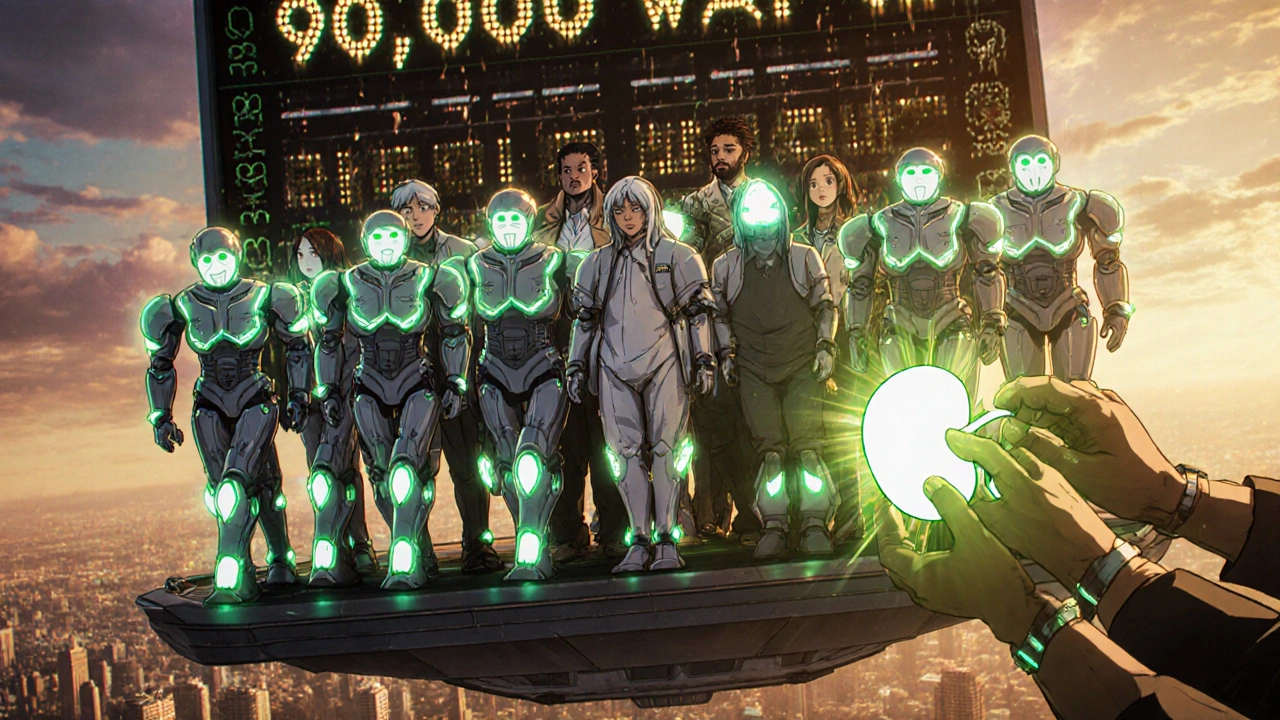When your kidneys stop working, your body can’t clean your blood. Waste builds up. Fluid swells your legs and lungs. Your bones weaken. Your heart struggles. This isn’t just feeling tired-it’s end-stage renal disease (ESRD), the point where your kidneys have lost 90% of their function. Without treatment, it’s fatal. But treatment doesn’t mean just surviving-it means deciding how you want to live.
What Happens When Kidneys Fail?
Your kidneys don’t just make urine. They regulate your blood pressure, balance electrolytes, produce red blood cell stimulants, and activate vitamin D. When they fail, everything else starts to unravel. Most people with ESRD have diabetes or high blood pressure-two conditions that quietly damage kidneys over years. Others have inherited diseases like polycystic kidney disease or autoimmune disorders like lupus. By the time symptoms show-fatigue, nausea, itching, swelling-it’s often too late to reverse the damage. The official diagnosis? A glomerular filtration rate (GFR) under 15 mL/min. That’s less than one-fifth of what a healthy kidney does. At this stage, you need renal replacement therapy: dialysis or a transplant. No other option keeps you alive long-term.Dialysis: Life Support, Not a Cure
Dialysis is mechanical kidney replacement. There are two main types: hemodialysis and peritoneal dialysis. Hemodialysis pulls your blood out through a needle, cleans it through a machine, and returns it. Most people do this three times a week, for three to four hours each session. That’s 12 to 16 hours a week just sitting in a clinic. Add travel, prep, and recovery, and it’s more like 20 hours. You’re tied to a schedule. You can’t just skip a session. Miss one, and toxins build up fast-headaches, cramps, even heart rhythm problems. Peritoneal dialysis uses the lining of your belly as a filter. You fill your abdomen with fluid, let it sit, then drain it. This can be done at home, often overnight with a machine. It’s more flexible-no clinic visits-but you have to do it every day, sometimes four times. And there’s a risk of infection in the belly, which can be serious. Both types require strict rules. You can’t eat salty foods, drink too much fluid, or have too much potassium or phosphorus. Bananas, oranges, potatoes, cheese, soda-many of these are off-limits. You’ll need phosphate binders with every meal. Vitamin D supplements. Blood pressure meds. Iron infusions. It’s a full-time job managing your body.Kidney Transplant: The Better Option
If you’re healthy enough, a kidney transplant is the best choice. It’s not just about living longer-it’s about living better. Studies show transplant recipients have a 68% lower risk of dying than those on dialysis. Five-year survival? About 83% for transplant patients versus 35% for dialysis patients. That’s not a small difference-it’s life-changing. Transplant patients eat normally. No more fluid limits. No more crushing fatigue after treatments. Many return to work, travel, exercise, and even have children. Hospital visits drop by half. You’re not chained to a machine. But it’s not simple. You need a matching donor-living or deceased. Living donor transplants have the best outcomes: 95% survive one year, 86% still working after five. Deceased donor kidneys do well too-94% at one year, 79% at five. You’ll take immunosuppressants for life. Drugs like tacrolimus and mycophenolate stop your body from rejecting the new kidney. But they weaken your immune system. You’re more prone to infections, skin cancer, and other illnesses. Monthly blood tests. Yearly biopsies. These meds cost $1,500 to $2,500 a month. Insurance covers most of it, but not always.
Who Gets a Transplant-and Who Doesn’t?
Not everyone qualifies. If you’re over 75 with severe heart disease, active cancer, uncontrolled mental illness, or ongoing drug or alcohol use, you’re typically not considered. But age alone isn’t a barrier anymore. Many people in their 70s and 80s get transplants if they’re otherwise healthy. The bigger problem? Access. Despite being just as sick, Black patients are less likely to be referred for transplant evaluation. A study called RaDIANT found that after training staff to recognize bias, referrals among Black patients jumped by 40%. That’s progress-but it shouldn’t take a study to fix it. Only 5% of people who start dialysis are even on the transplant list before treatment begins. Why? Because most doctors wait until the patient is already sick before referring them. The truth? You should be evaluated when your GFR drops below 30-not 15. That gives you time to find a living donor, get medically ready, and avoid months or years on dialysis.Quality of Life: The Real Measure
A 2021 study measured quality of life using the KDQOL-36 survey. Dialysis patients scored 53.7 out of 100. Transplant recipients? 82.4. That’s a 28.7-point gap. Peritoneal dialysis patients scored 67.2-better than hemodialysis, but still far behind transplant. Why the difference? Freedom. Transplant patients sleep through the night. They don’t need to plan their lives around dialysis appointments. They can eat a burger, drink a beer, go on a road trip. They feel like themselves again. But the trade-off? Lifelong medication. Fear of rejection. The stress of waiting. For many, the fear of surgery or the long waitlist is worse than dialysis. That’s why some choose to stay on dialysis-even though it’s harder.
The System Is Broken-But Changing
Medicare pays for ESRD care starting in the fourth month of dialysis. It spends $35 billion a year on less than 1% of its enrollees. That’s more per patient than cancer or heart disease. And yet, the system still pushes people toward dialysis because it’s easier to bill than a transplant. New programs are trying to fix this. The Kidney Care Choices Model, launched in 2022, rewards doctors for referring patients early to transplant centers. More living donor transplants are happening-up 18% since 2018. The 21st Century Cures Act lets doctors use kidneys from older or higher-risk donors, expanding the pool. Still, over 90,000 people are on the waiting list. Only 27,000 transplants happen each year. That means 3,000 new people join the list every month. The gap is growing.What Can You Do?
If you or someone you love has advanced kidney disease:- Ask for a transplant evaluation when your GFR drops below 30-not 15.
- Ask if you have a living donor option-a spouse, friend, or family member might be willing to donate.
- Don’t assume you’re too old or too sick. Ask for a second opinion.
- Learn about home dialysis. It’s not perfect, but it’s more flexible than in-center treatment.
- Connect with patient advocacy groups like the National Kidney Foundation or MOTTEP. They help with navigation, education, and support.
Can you live a normal life after a kidney transplant?
Yes, most transplant recipients return to normal activities-work, travel, exercise, even parenting. They don’t need dialysis, have fewer dietary restrictions, and report much higher energy levels. The key is taking immunosuppressant medications exactly as prescribed and attending regular checkups. While there’s a higher risk of infections and certain cancers, most people adapt well and live full, active lives for decades.
How long is the wait for a kidney transplant?
The average wait is about four years, but it varies widely by region, blood type, and how well you match with donors. People with rare blood types or high antibody levels wait longer. Living donor transplants can happen within months if a match is found. Waiting for a deceased donor kidney often means years on dialysis, which is why early referral is critical.
Is dialysis worse than a transplant?
In almost every way, yes. Transplant recipients live longer, have fewer hospital stays, and report significantly better quality of life. Dialysis is physically draining, time-consuming, and comes with strict dietary rules. While transplant requires lifelong medication and monitoring, the trade-off is worth it for most people. The data shows transplant reduces death risk by 68% compared to dialysis.
Can you get a transplant without being on dialysis first?
Yes, and it’s called a preemptive transplant. It’s done before dialysis is needed. Patients who get preemptive transplants have better outcomes-longer graft survival, fewer complications, and faster recovery. But only about 5% of patients get this option because most doctors wait until kidney failure is advanced. If you’re at risk, ask for a transplant evaluation early.
Why are Black patients less likely to get kidney transplants?
Studies show systemic barriers-like lower referral rates, lack of access to transplant centers, and implicit bias among healthcare providers-have led to unequal access. Even when medically eligible, Black patients are less likely to be evaluated or listed. Programs like RaDIANT and MOTTEP have improved referral rates by training staff and educating patients, but disparities still exist. Advocacy and early intervention are key to closing the gap.
What are the side effects of immunosuppressant drugs after transplant?
Common side effects include increased risk of infections (like colds, flu, or skin infections), higher chance of skin cancer, high blood pressure, weight gain, tremors, and elevated cholesterol. Some drugs can affect the kidneys or liver over time. Regular blood tests help monitor these effects. Most side effects are manageable with dose adjustments and lifestyle changes, but patients must never skip doses or stop meds without consulting their doctor.
Can you donate a kidney if you’re over 60?
Yes. There’s no strict upper age limit for living kidney donation. Donors in their 60s and even 70s have successfully donated if they’re in excellent health, have normal kidney function, and no major chronic conditions. Each potential donor undergoes thorough medical and psychological screening to ensure safety. Older donors are increasingly common as the need for kidneys grows.


Elizabeth Buján
November 13, 2025 AT 05:57just wanna say i cried reading this. not because it’s sad, but because it’s real. i’ve seen my mom go through dialysis for 3 years and she still smiles every morning. she eats bananas when no one’s looking and calls it ‘rebellious nutrition.’ she’s not cured, but she’s alive. and that counts.
Andrew Forthmuller
November 14, 2025 AT 16:02transplant better but how much does the med cost after? like, real talk.
Amie Wilde
November 16, 2025 AT 06:46my uncle got a kidney from his sister. 12 years later and he’s hiking in patagonia. no dialysis. no restrictions. just life.
Shante Ajadeen
November 16, 2025 AT 07:29if you’re reading this and you’re healthy-consider being a donor. it’s not as scary as people make it sound. you’re not giving up your only kidney. you’re giving someone back their life.
vanessa k
November 17, 2025 AT 21:54the system is rigged. i work in a clinic and we get told to wait until GFR hits 15 because that’s when insurance kicks in. but by then, the patient is already broken. we know better. we just don’t get to do better.
Esperanza Decor
November 19, 2025 AT 01:28my cousin got a transplant at 68. they said she was too old. she got it anyway. now she teaches yoga to other patients. age is just a number when your body’s been through hell.
Danae Miley
November 20, 2025 AT 03:55the 68% lower mortality rate for transplant recipients is statistically significant, but the data often excludes patients with comorbidities like advanced heart failure or metastatic cancer. those patients still deserve compassionate care-even if they’re not transplant candidates.
Erica Cruz
November 20, 2025 AT 12:50everyone acts like dialysis is torture, but let’s be real-transplant patients are just drug-dependent zombies with a higher chance of skin cancer. the ‘better quality of life’ is marketing. the real winner here is the pharmaceutical industry.
Johnson Abraham
November 21, 2025 AT 08:45lol why are we even talking about this? just get a kidney from a dead guy. no one cares about living donors. it’s all about the money anyway. 🤷♂️
Samantha Wade
November 22, 2025 AT 14:21As a nephrology nurse with over 18 years of experience, I can confirm that early referral for transplant evaluation-when GFR drops below 30-dramatically improves long-term outcomes. The systemic delay in referrals is not just inefficient; it’s unethical. We must prioritize patient autonomy over billing cycles. Institutions that implement proactive transplant pathways see a 50% increase in preemptive transplants. This isn’t theory-it’s practice. And it saves lives.
Deepa Lakshminarasimhan
November 23, 2025 AT 04:26they’re hiding something. why do all the transplant meds come from the same 3 companies? why is the waitlist so long if there are so many dead people? the government is rationing kidneys. they want you on dialysis so they can keep billing. they don’t want you healthy. they want you dependent.
dace yates
November 23, 2025 AT 06:06is there data on how many living donors develop kidney disease later? i’ve heard conflicting things.